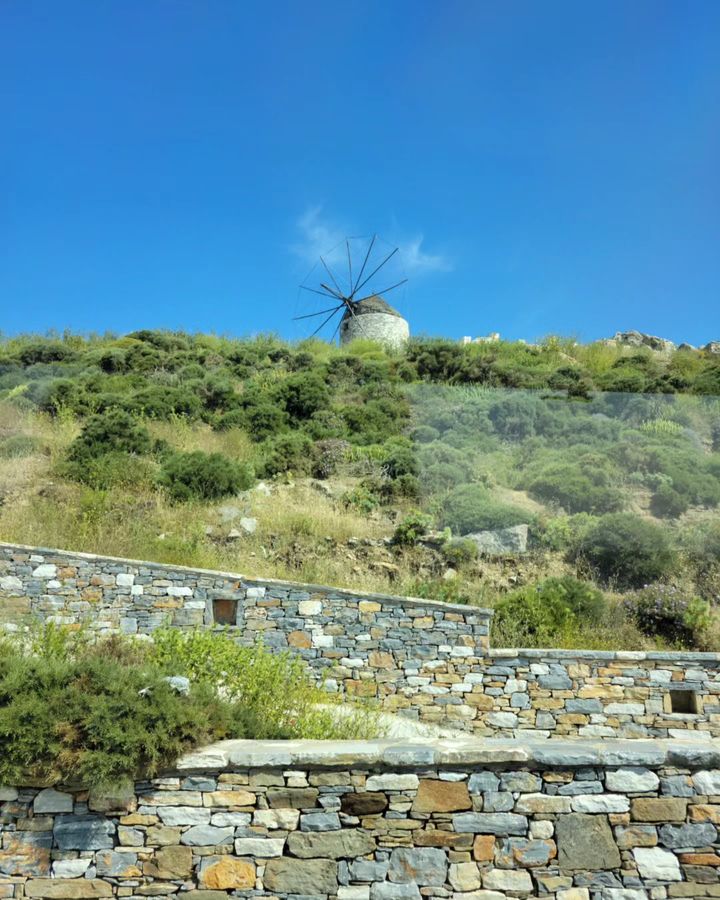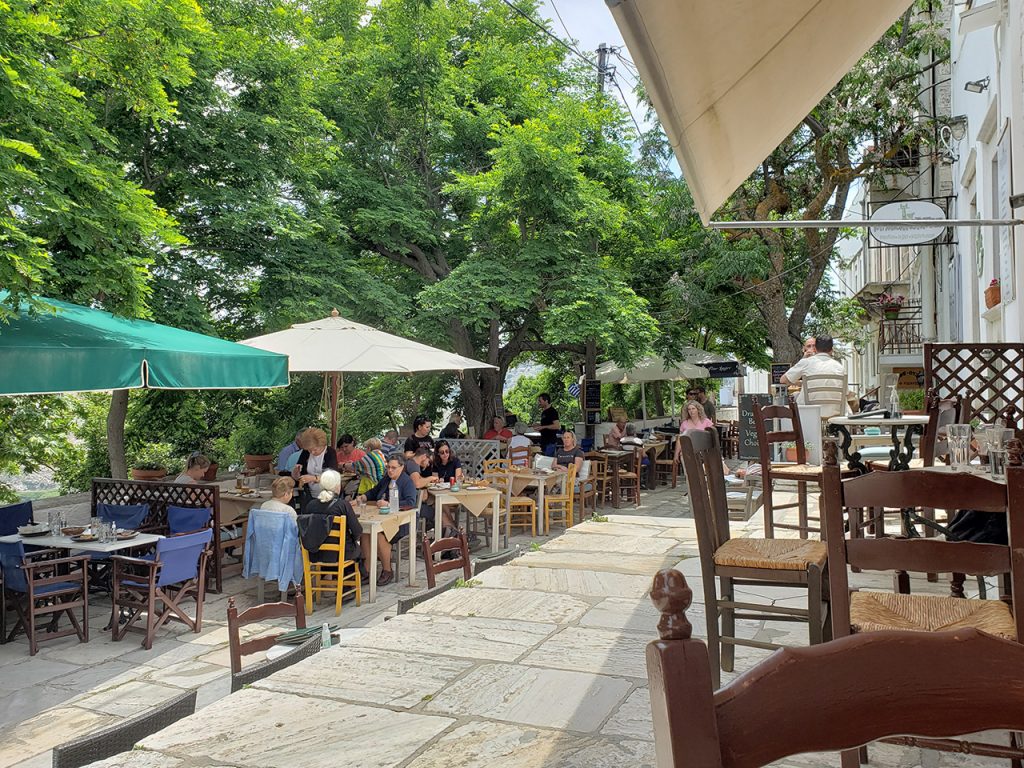
We wanted to see the interior of Naxos beyond the main port town, and luckily the island has an excellent public bus service that operates under the KTEL umbrella, like the buses we took in Crete a few years ago. We had our choice of pretty mountain towns to visit — Chalki and Filoti almost made the cut — but we settled on Apeiranthos.
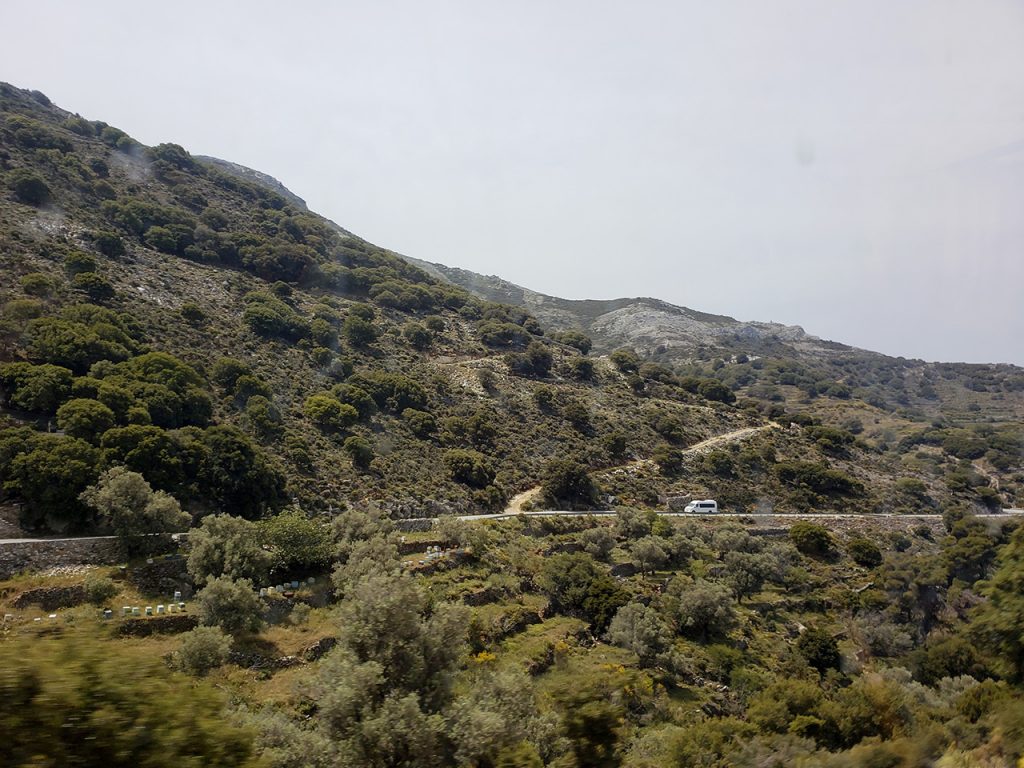
It didn’t take long to for the bus to pass through the small suburbs of Naxos Town, and the scenery immediately became mountainous. Our ears began popping as the bus quickly ascended on winding roads.

We travelled through small villages, family farms, groves of olive trees, and countless rocky peaks, many capped with small white churches.
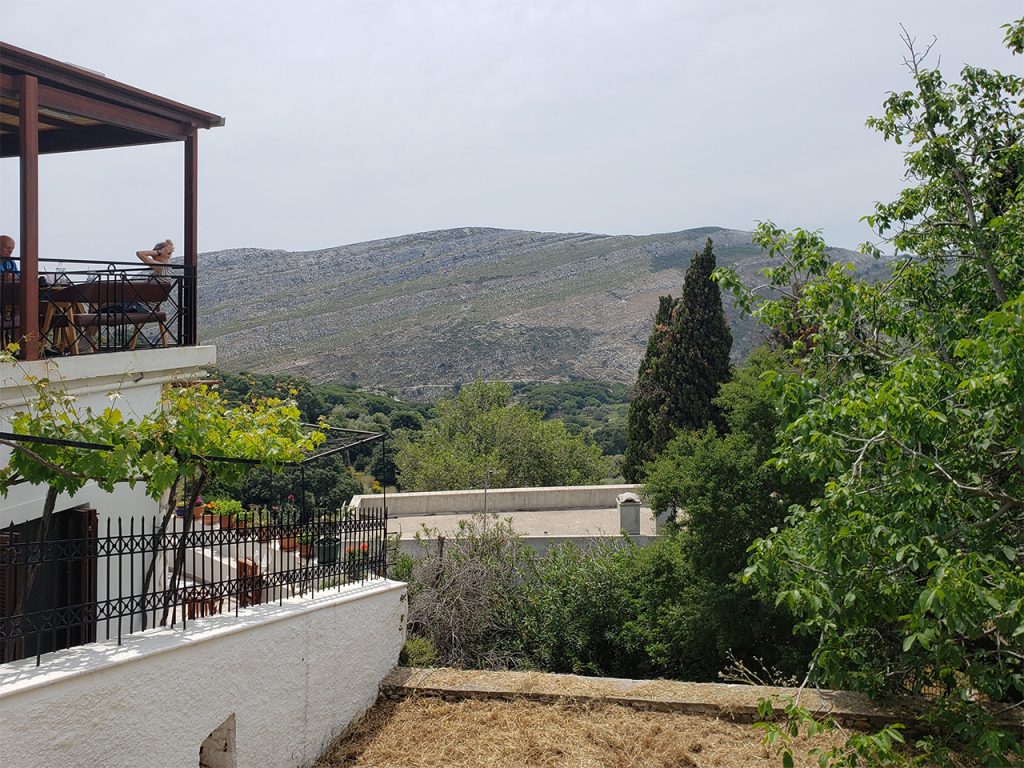
The hour-long ride to Apieranthos passed quickly. We had a few hours to explore and find some lunch before catching a return bus back into town later in the afternoon.
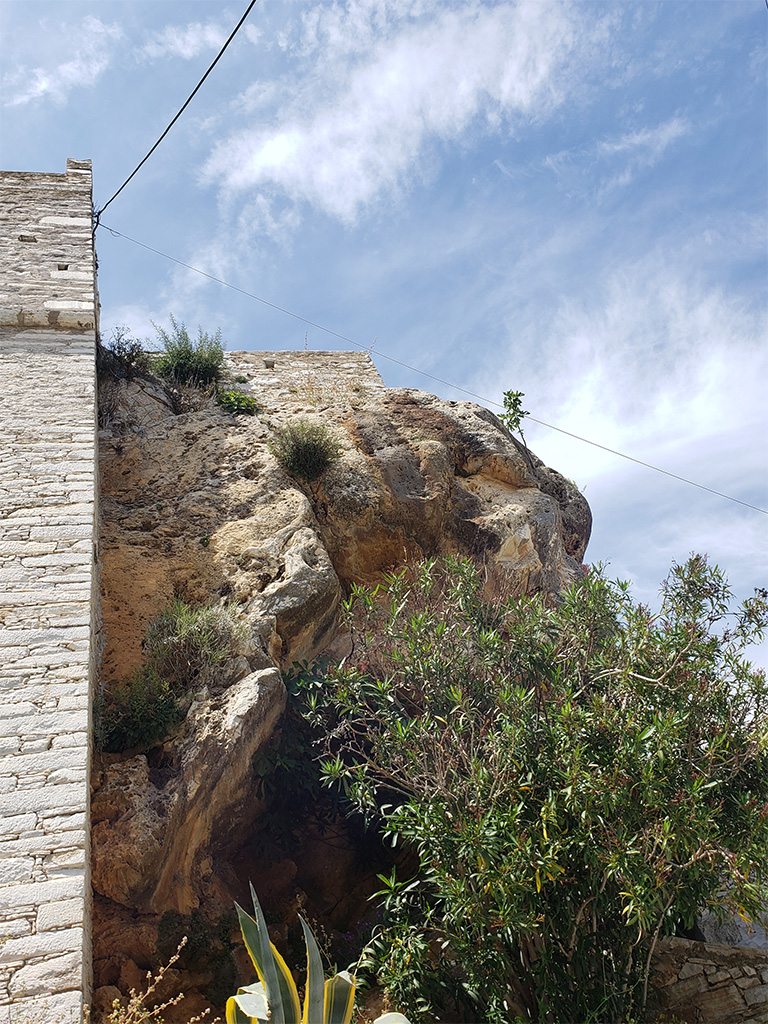
Buldings in Apeiranthos were traditionally constructed from stone, and this gave the town a different look than the whitewashed Cycladic buildings we’d seen elsewhere. One notable building is the Zevgoli Tower House, an example of a fortified home-slash-castle built during the era of Venetian rule in the 17th century. It’s still privately owned and can only be photographed from the outside.
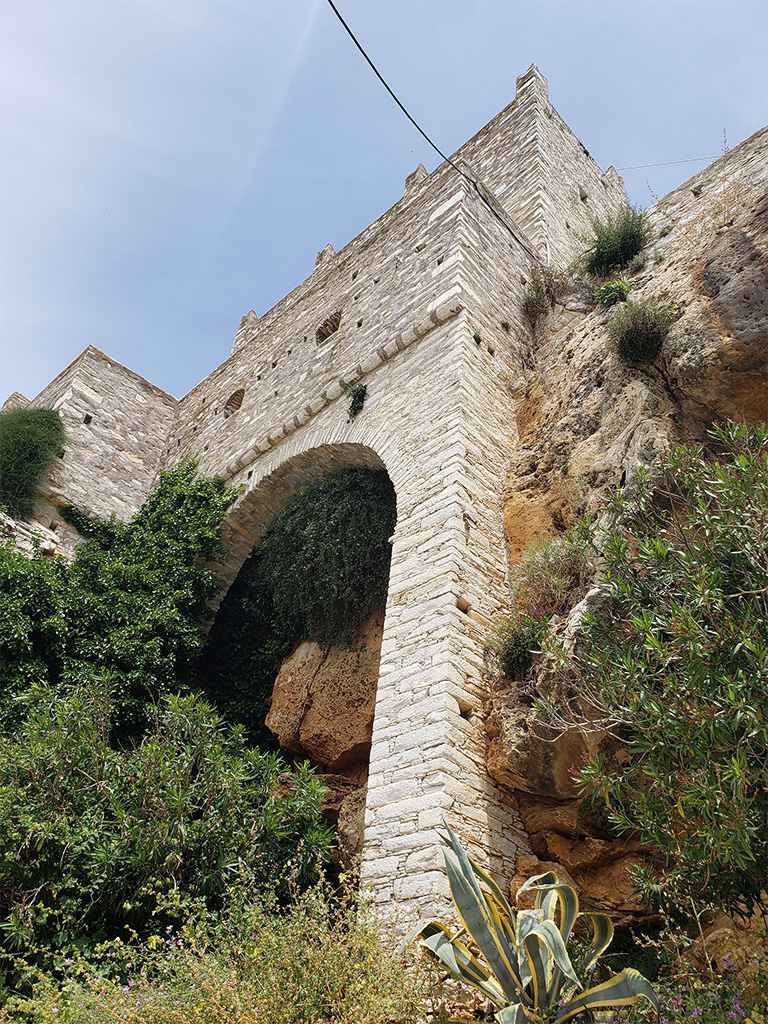
The house looms so high above the street it’s impossible to capture in one photo. It looks equally impressive from different angles. I recently read Patrick Leigh Fermor’s writing about the tower houses of the warring aristocratic families in the Mani area of Greece, so seeing similar architecture was particularly interesting to me, though I have no idea if Apeiranthos has an equally turbulent history.
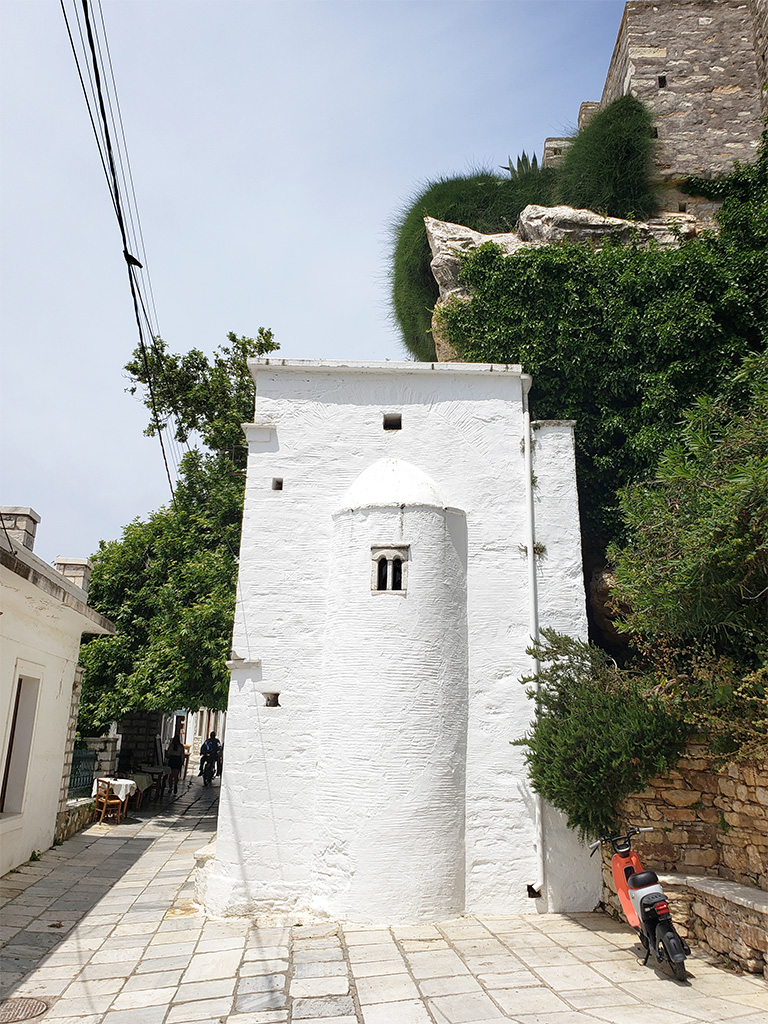
Past the tower house, the streets dissolved into the usual labyrinth of narrow lanes and staircases. Although the main strip was busy with group tours, the back streets were very quiet. We explored at random, with each turn or twist revealing something new to see.
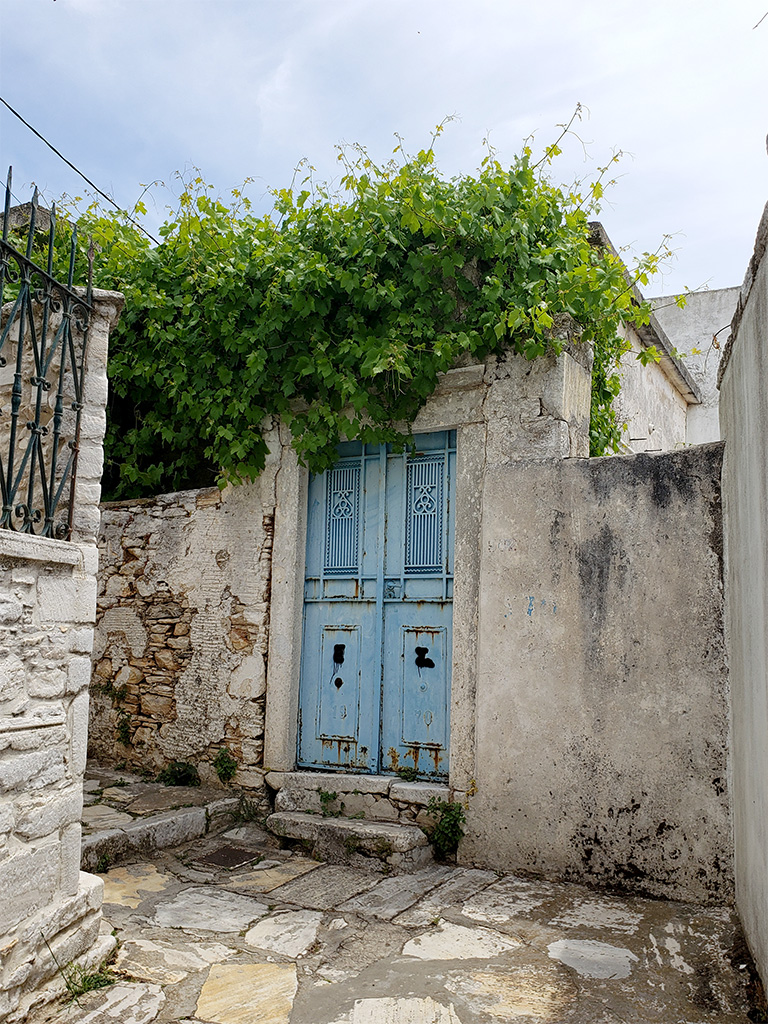
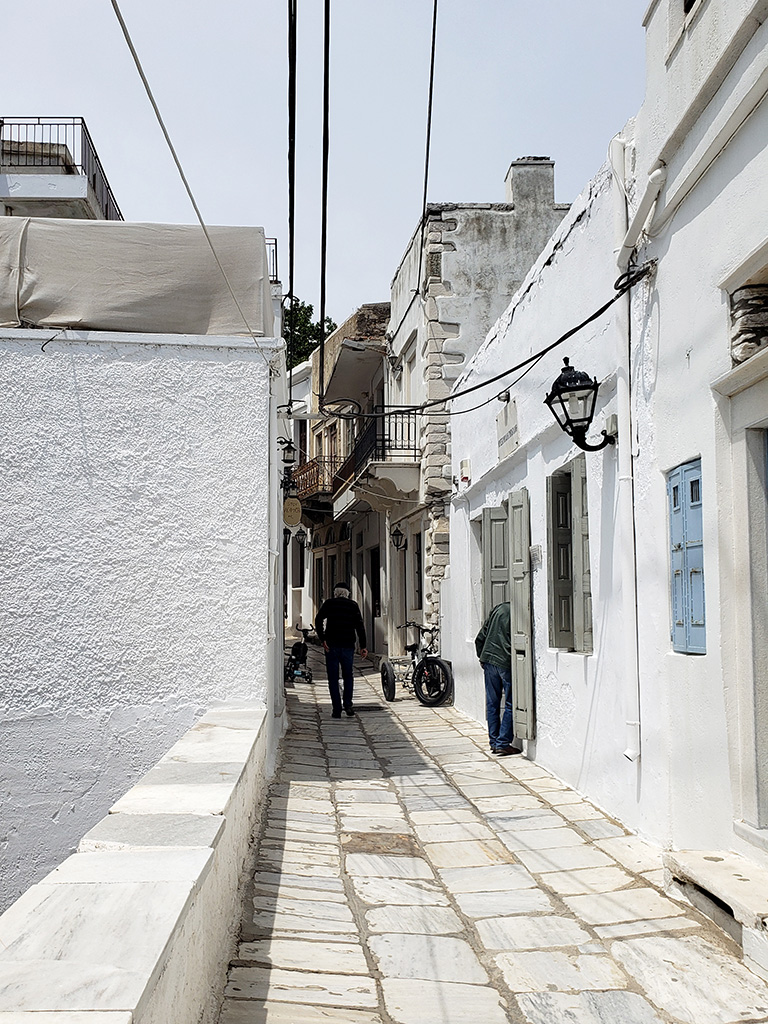
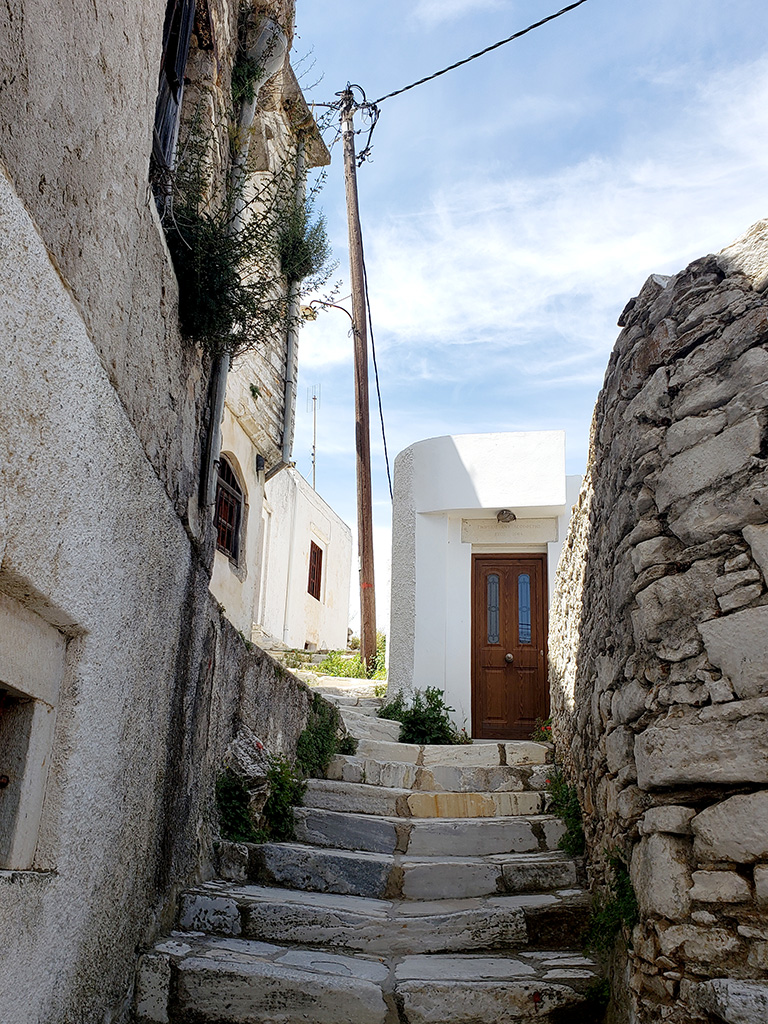
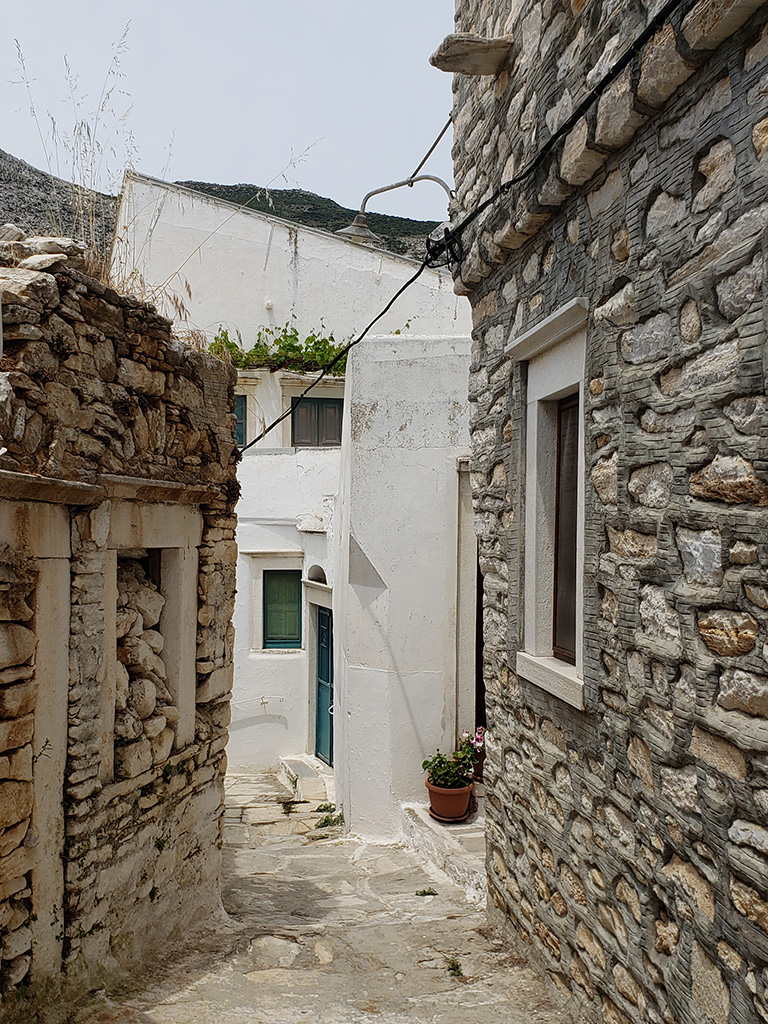
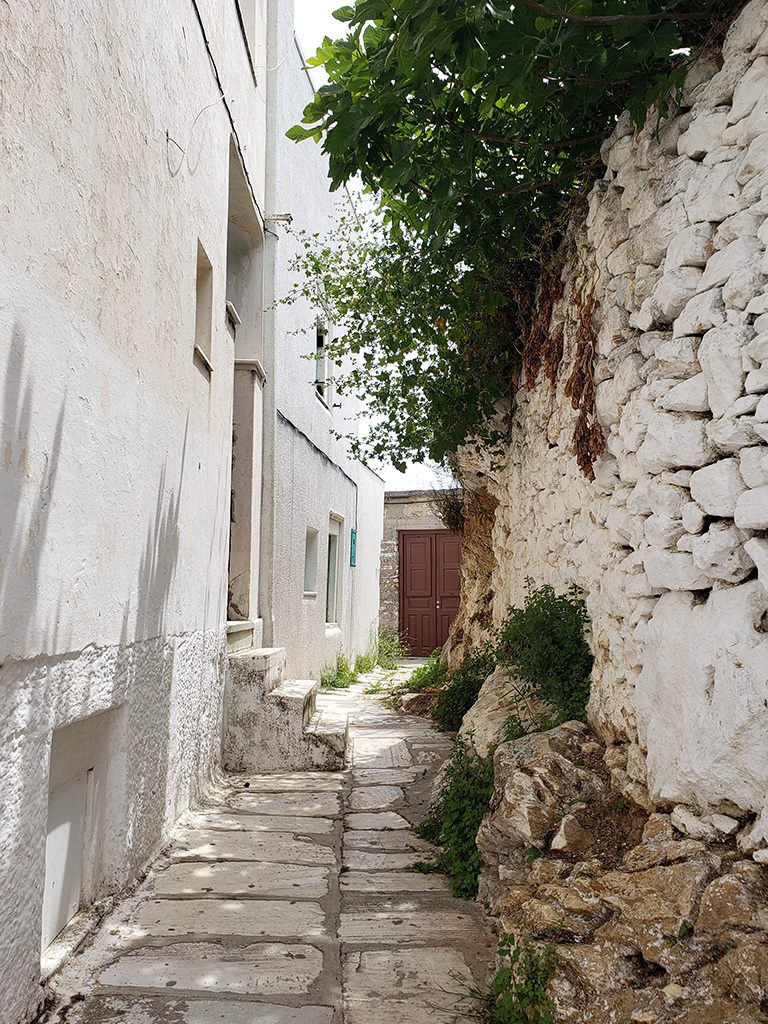

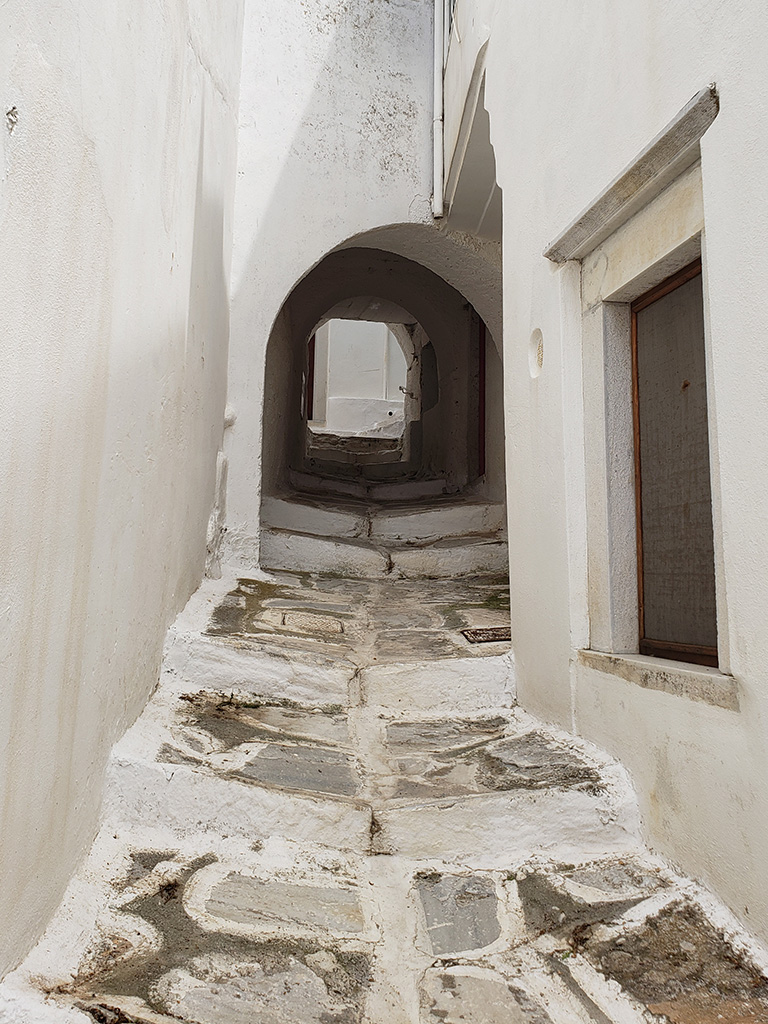
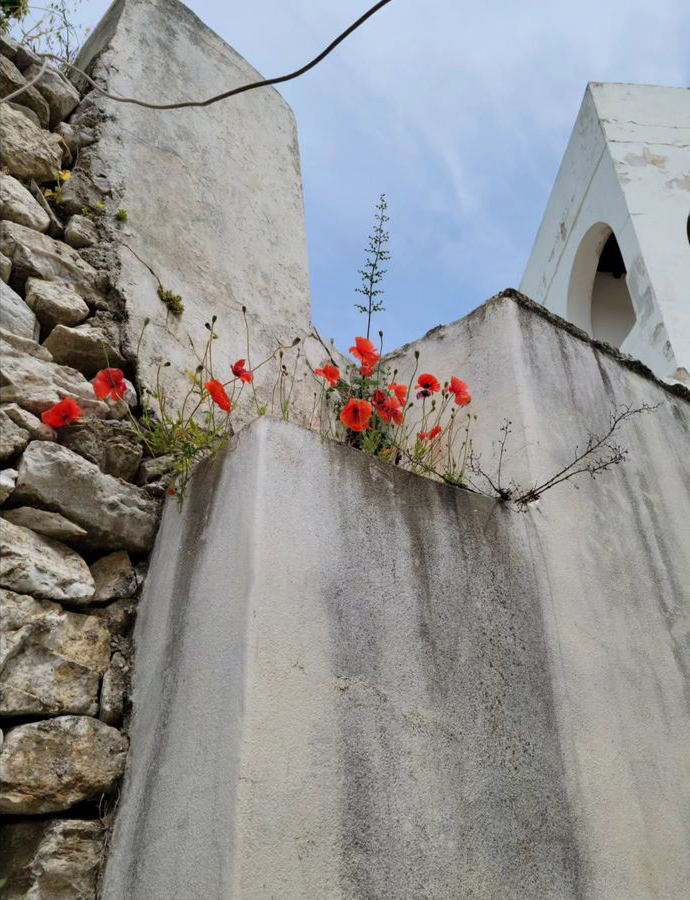
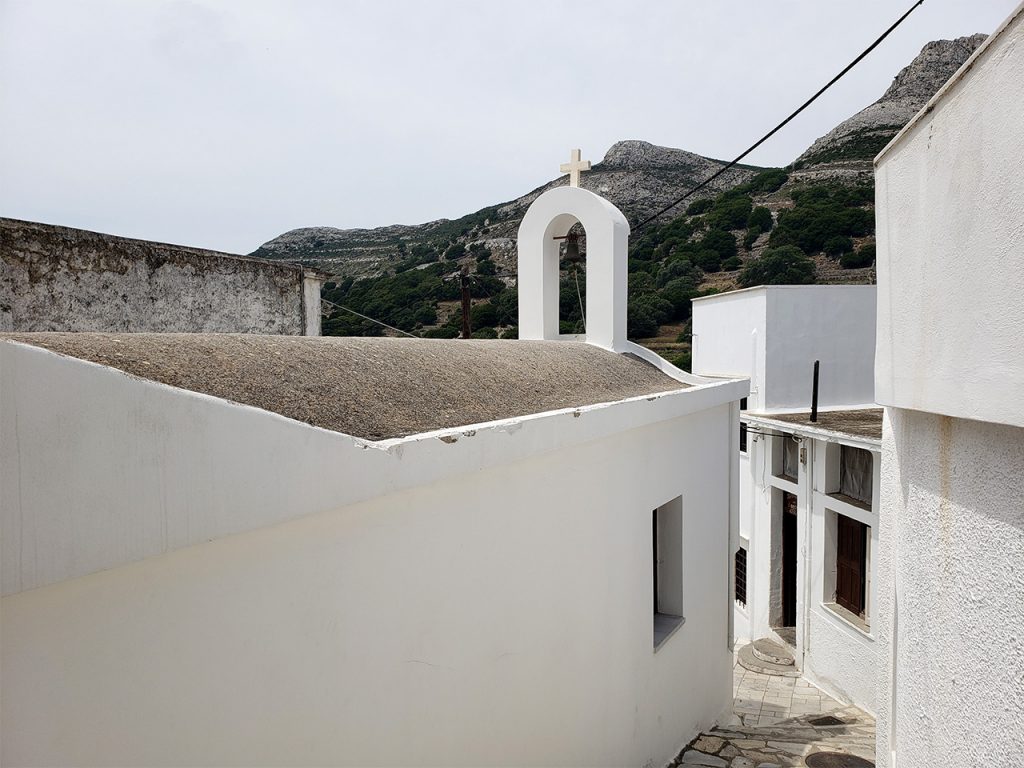
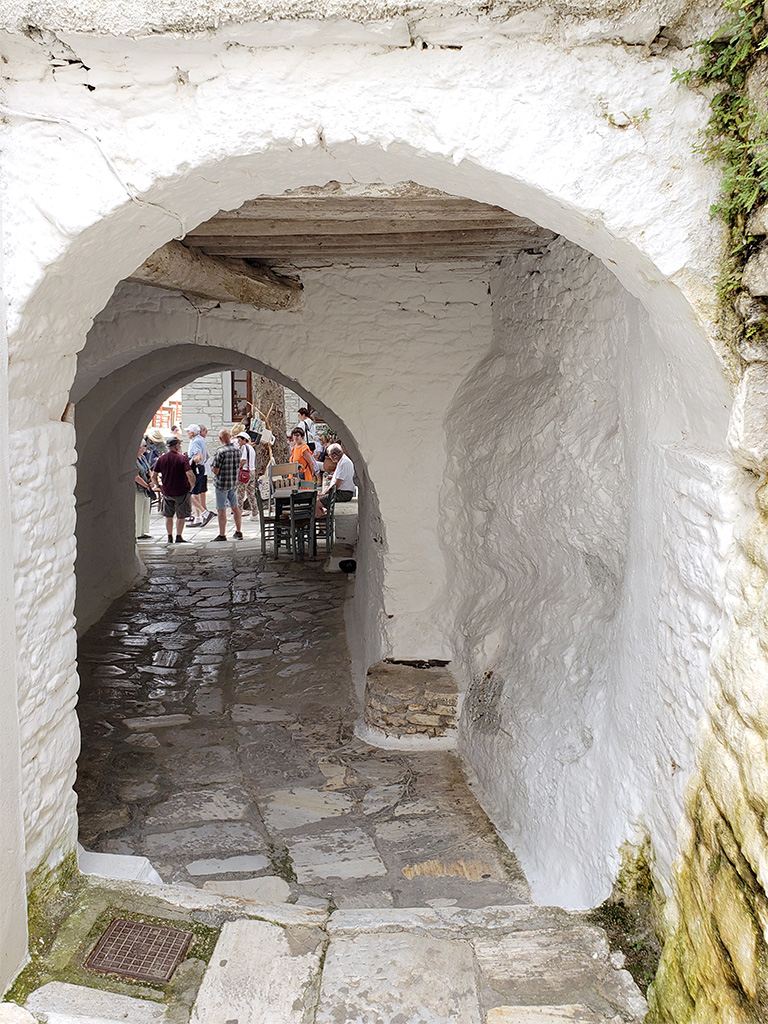
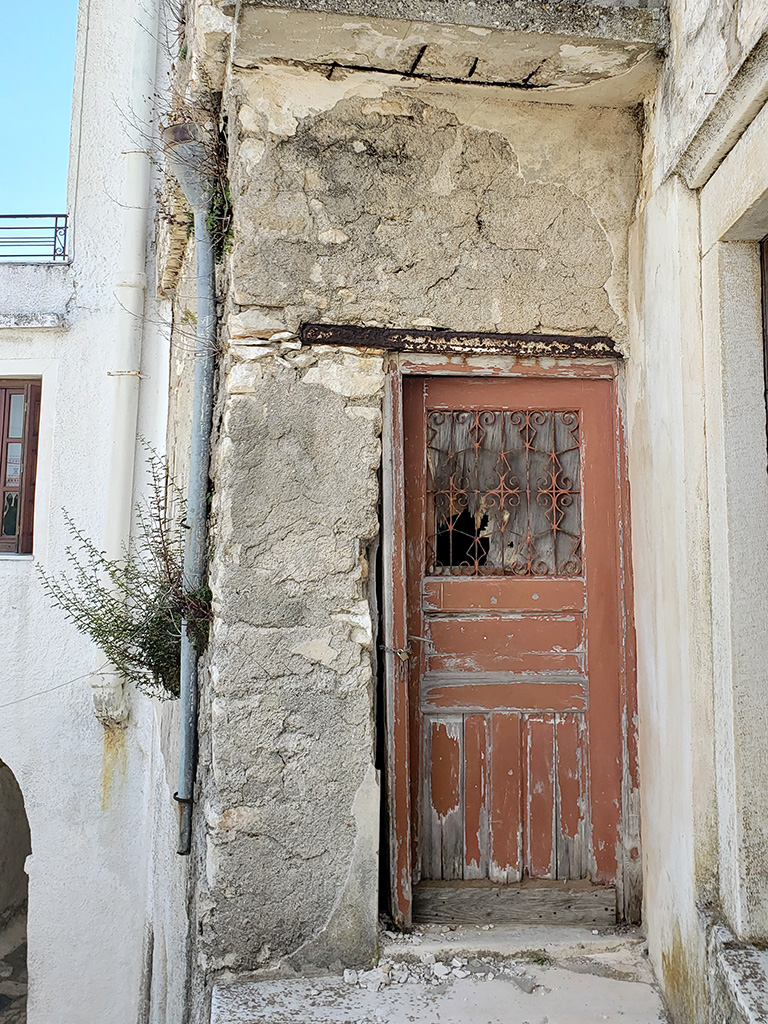
Some of the buildings appeared abandoned, like this one , but when we peeked through the gaps in the broken door the interior still had the pots and pans and other personal belongings of whoever left it.
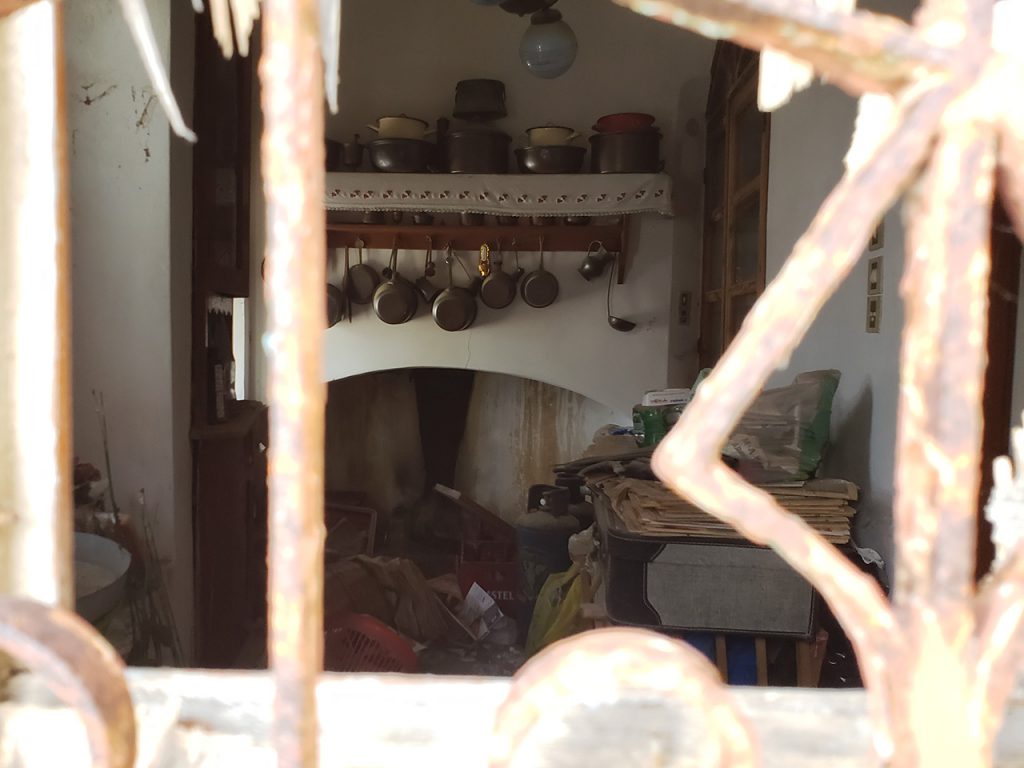
We stumbled across the town’s Folklore Museum, Geological Museum, and Fine Arts Museum, all ambitiously housed in the same building. The exhibits were lovingly prepared and gave a glimpse into local life.
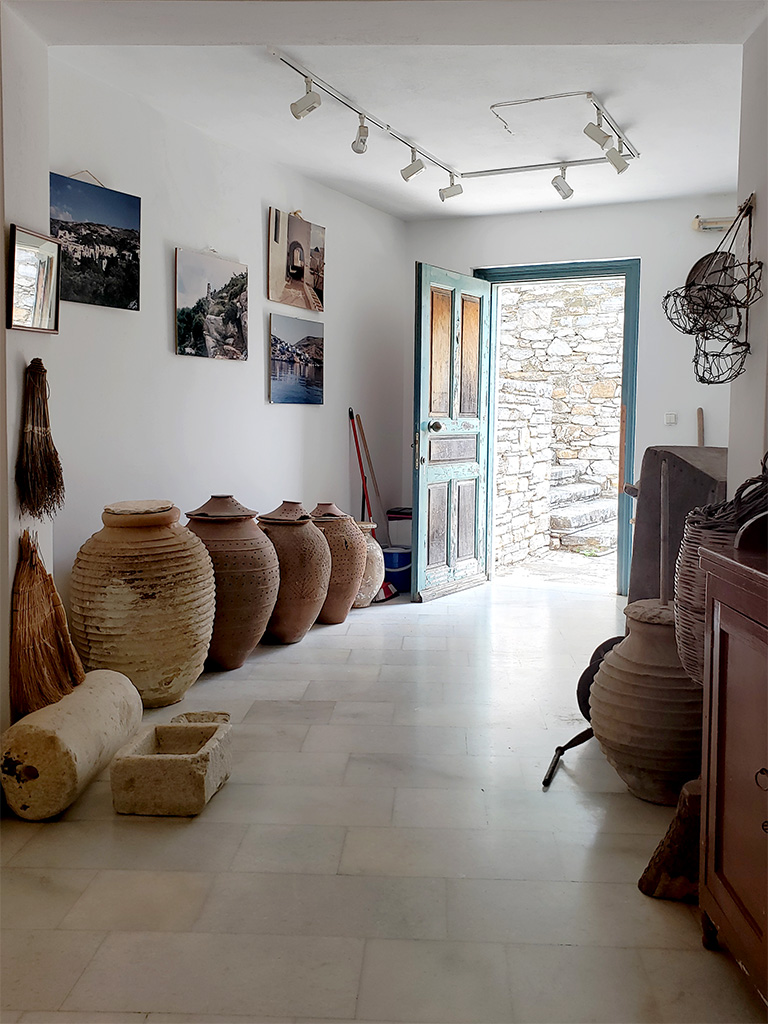
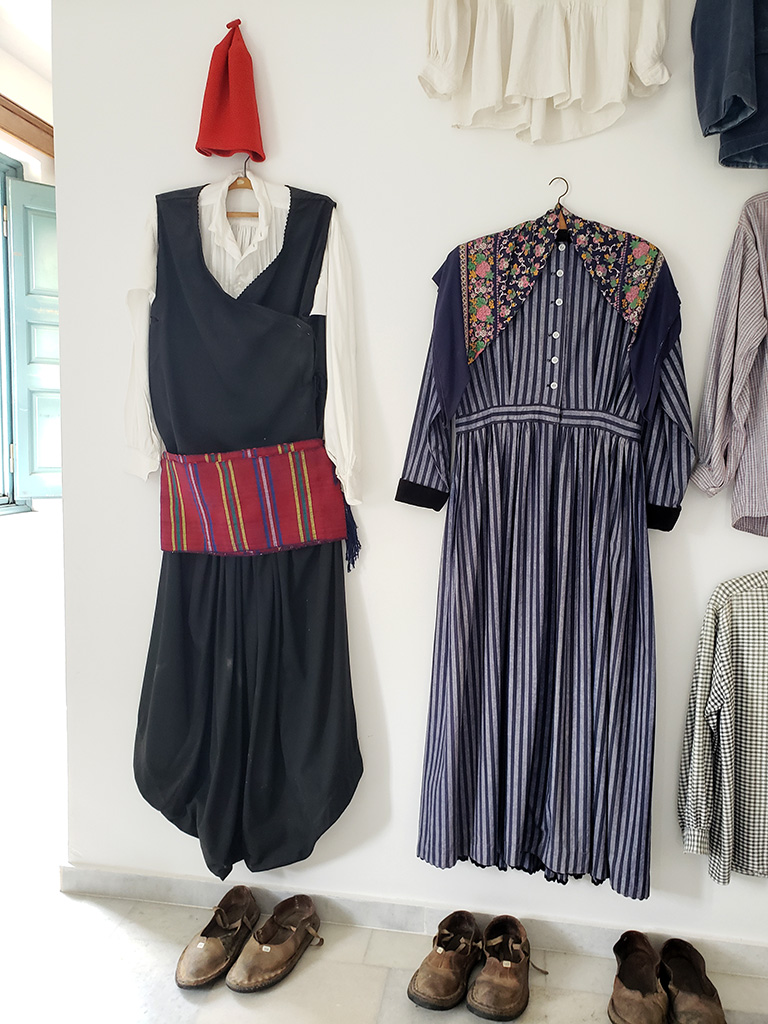
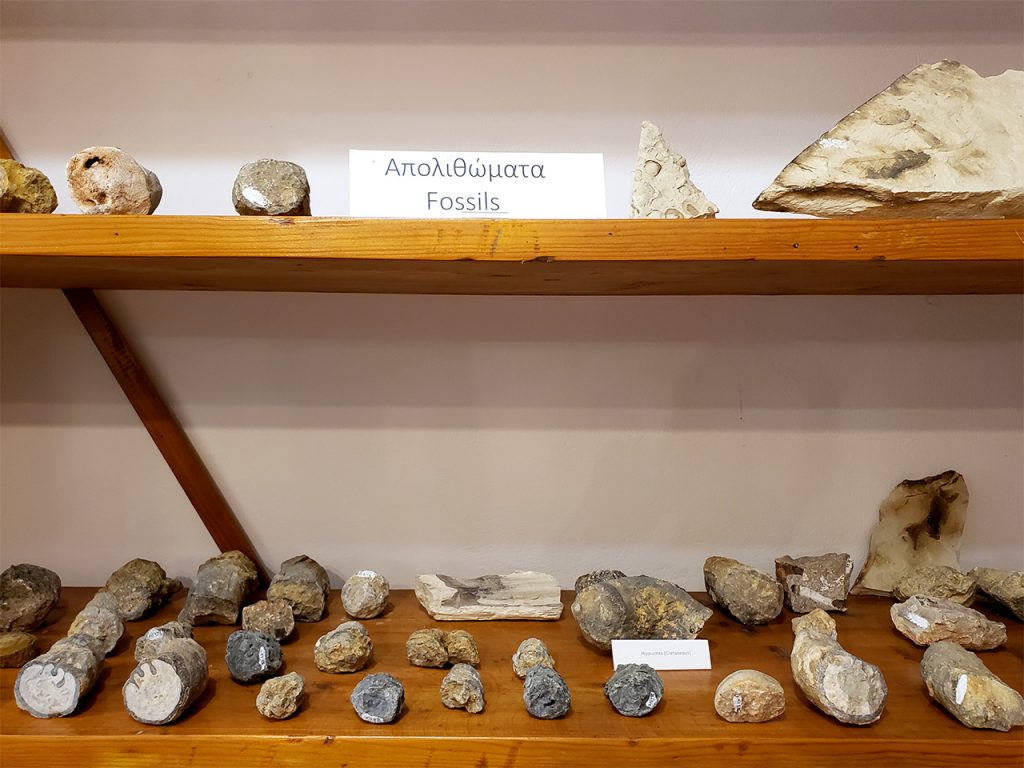
While we were in the Geological Museum looking at a shelves full of rocks and fossils, an English-speaking man appeared. He was dressed like a caricature of a geologist, in a matching olive green shirt and shorts and chin-strapped hat. He had a chunk of rock in his hand, which he showed to the curator. She pulled out a magnifying glass, examined it, and then with excitement equal to his began identifying all the minerals contained within it. We left them still discussing the rock.
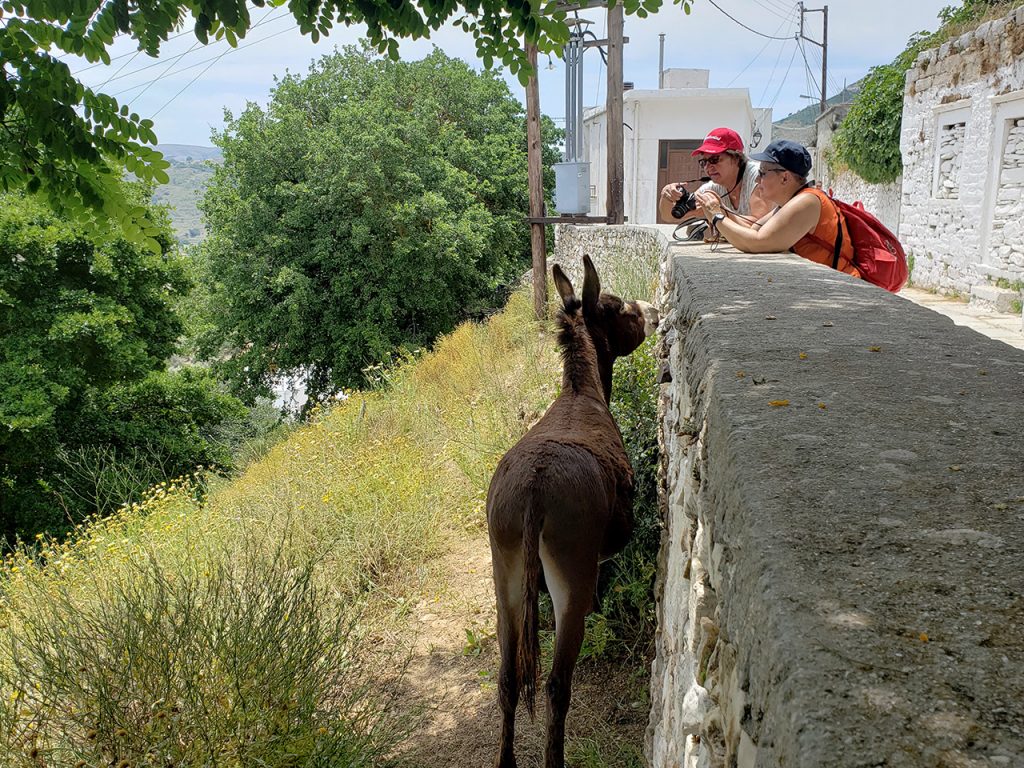
The pedestrianized tree-lined main drag of Apeiranthos has numerous nice restaurants and cafes, and also a small patch of grass occupied by this donkey, who can be heard throughout town loudly braying at random intervals.
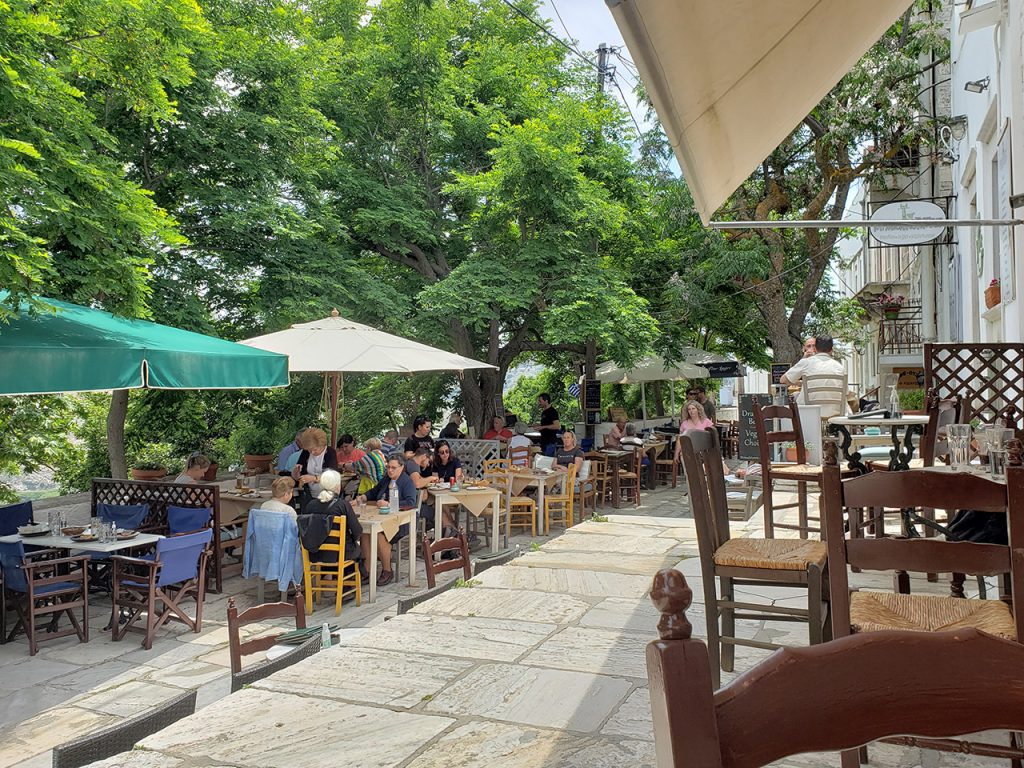
We had a light lunch at Cafe Ouzeri Giorgos, then settled the bill and moved two doors down to Café Sala where we enjoyed coffee, tea and sour cherry spoon desserts.
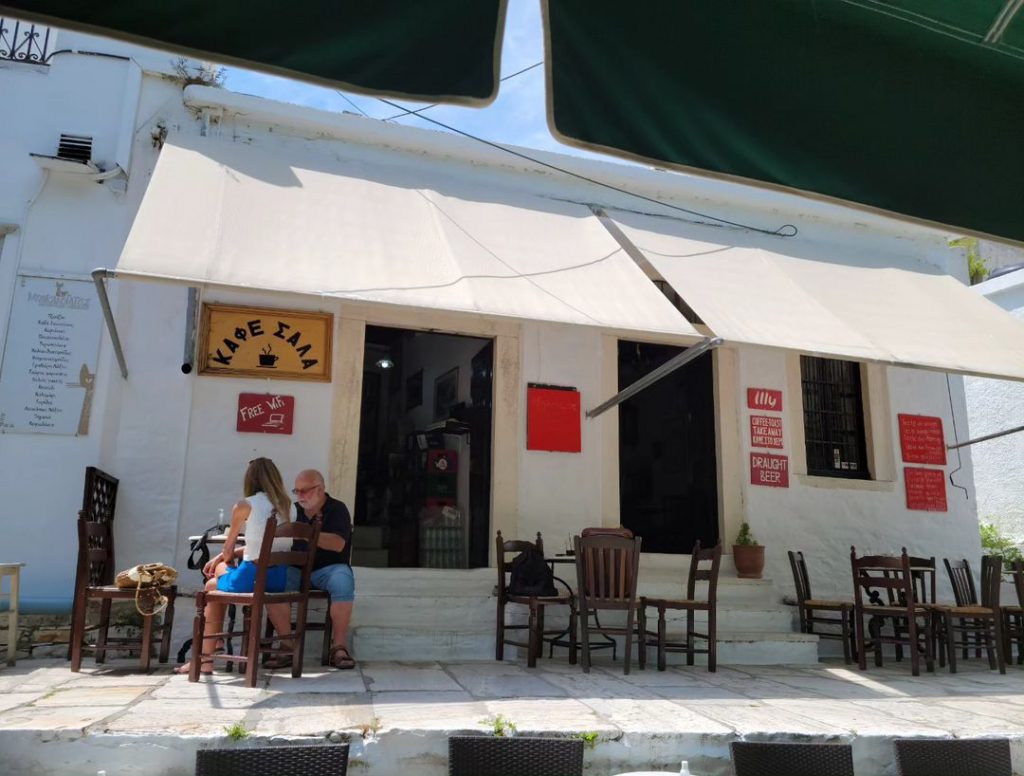
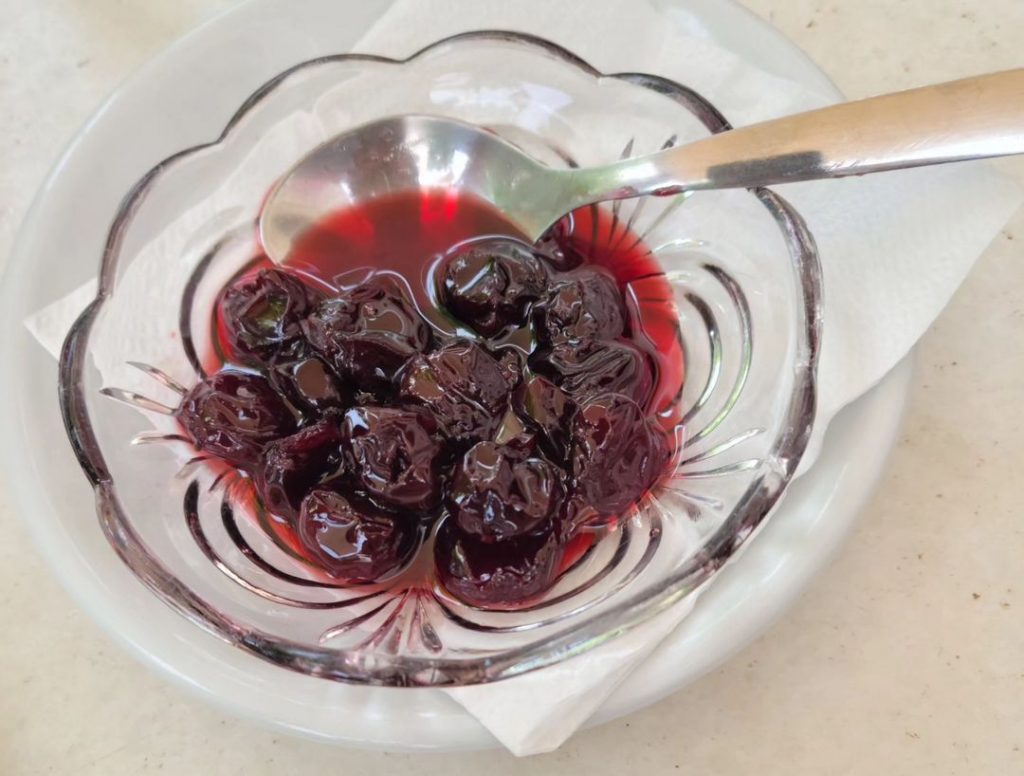
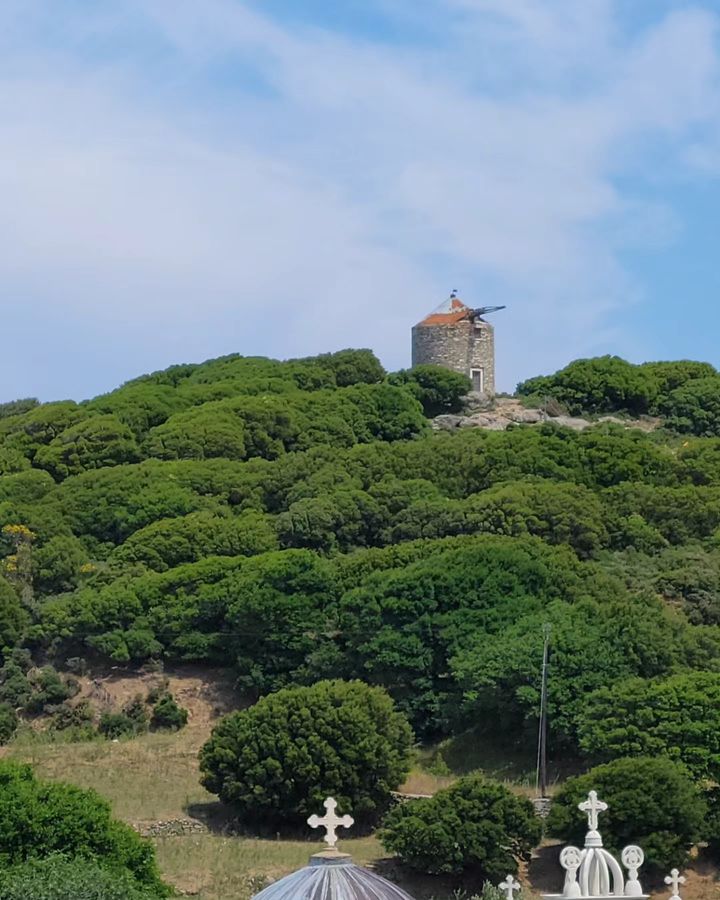
Apieranthos has windmills, too. These two were visible up in the hills near the bus stop.
